Diamonds are often thought of as a valuable investment, and many people are willing to pay top dollar for these precious stones. However, in reality, diamonds are not worth as much as you pay for them when you buy them from a retail outlet. There are several reasons why.
The Reality of the Diamond Retail Industry
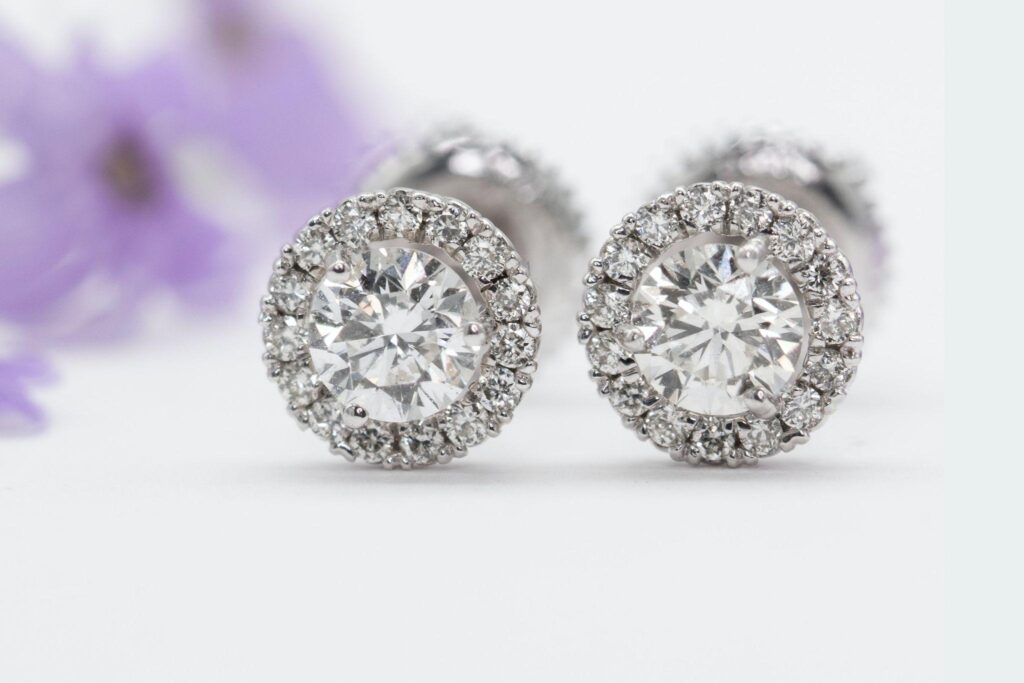
Diamonds are a massive industry, and there’s no question it has economic and societal value. However, like with any major industry, diamond retail has its own drawbacks and secrets.
Here are a few things you may not know about the industry and the reality of diamond prices:
- Retail diamond prices are often inflated due to the costs associated with running a physical store. Retail outlets have to pay rent, staff, and other overhead expenses, which factor into the price of the diamond. This means customers end up paying a premium for the convenience of shopping in a physical store.
- Heavy Advertising by Major Brand Names. Prominent jewelers that heavily advertise online and on television often inflate the cost of diamonds. Every advertisement or promotional campaign costs money, and these expenses get passed onto the consumer. They’re added to the overall purchase price of the diamond jewelry. As a result, customers not only pay for the diamond but for the brand’s advertising expenditure. Such branding efforts are made to instill trust and recognition among consumers. However, it’s essential to remember that this added value from advertising doesn’t change the intrinsic value of the diamond or piece. It’s only worth what it’s worth.
- The diamond industry is notorious for its lack of transparency and regulation. This means retailers can charge consumers whatever they want for their diamonds, without any accountability. In rare cases, since diamond grading isn’t a pure science, it’s an art, retailers can also manipulate the grading of diamonds, making lower quality diamonds appear more valuable than they actually are by leaning towards better grades.
- Diamonds are not a finite resource. Despite what the diamond industry would like you to believe, there is actually an abundance of diamonds in the world. In fact, diamonds are more common than most people realize. The diamond industry has created the illusion of scarcity by controlling the supply of diamonds, but in reality, there are more than enough diamonds to go around.
Do Diamonds Have a Resale Value?
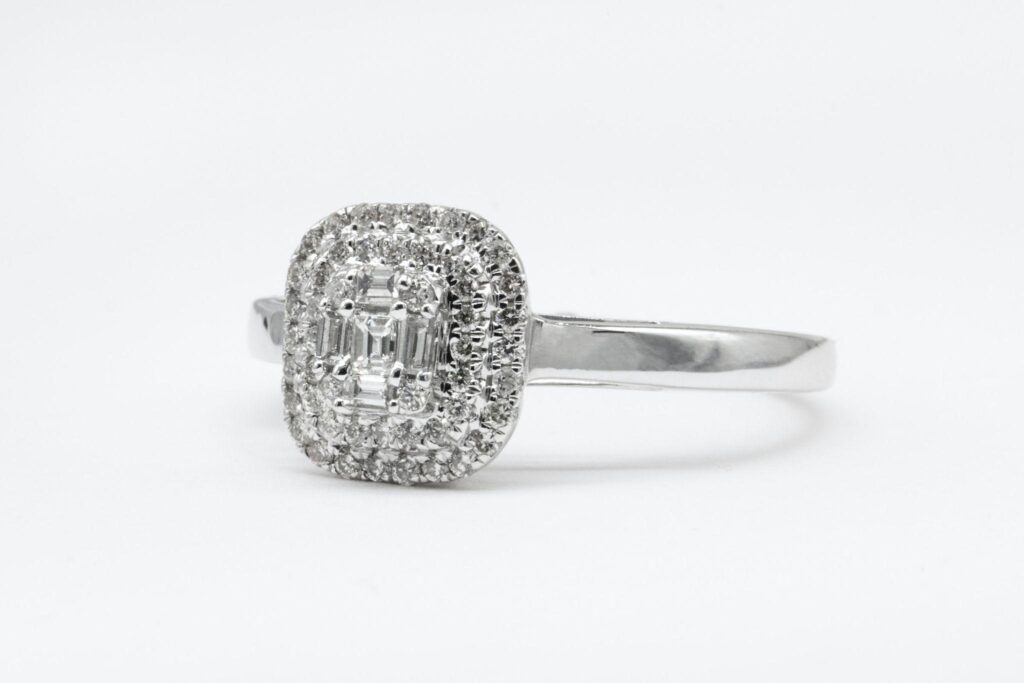
Diamonds do have a resale value, but it is notoriously low. Unlike other investments, such as gold or real estate, diamonds do not appreciate in value over time. In fact, the resale value of diamonds can be as little as 20% of the retail price. This means customers who buy diamonds from retail outlets are unlikely to recoup their investment if they decide to sell their diamonds later on.
Do Diamonds Increase in Value Over Time?
In general, no. While a beautiful, high-quality diamond might seem like it would make a good long-term investment, the sole determining factor is demand.
There are some rare, very specific cases in which a diamond item might increase in value beyond its material worth. If a highly prized ring or unique diamond piece has some sort of special historical or collectible significance, it may have greater value to antiques experts, museums and other such collectors. The vast majority of diamonds won’t hold this kind of value, however, and their material value will not appreciate.
Why Do Diamonds Depreciate?
The market for diamonds isn’t as liquid as the markets for things like gold and silver. Not only are the diamonds not as easily recycled, but many sellers expect far too much money because of the retail markup they paid. There just isn’t as much retail resale demand, causing the diamond to start depreciating as soon as it is bought.
What Factors Determine a Diamond’s Material Value?
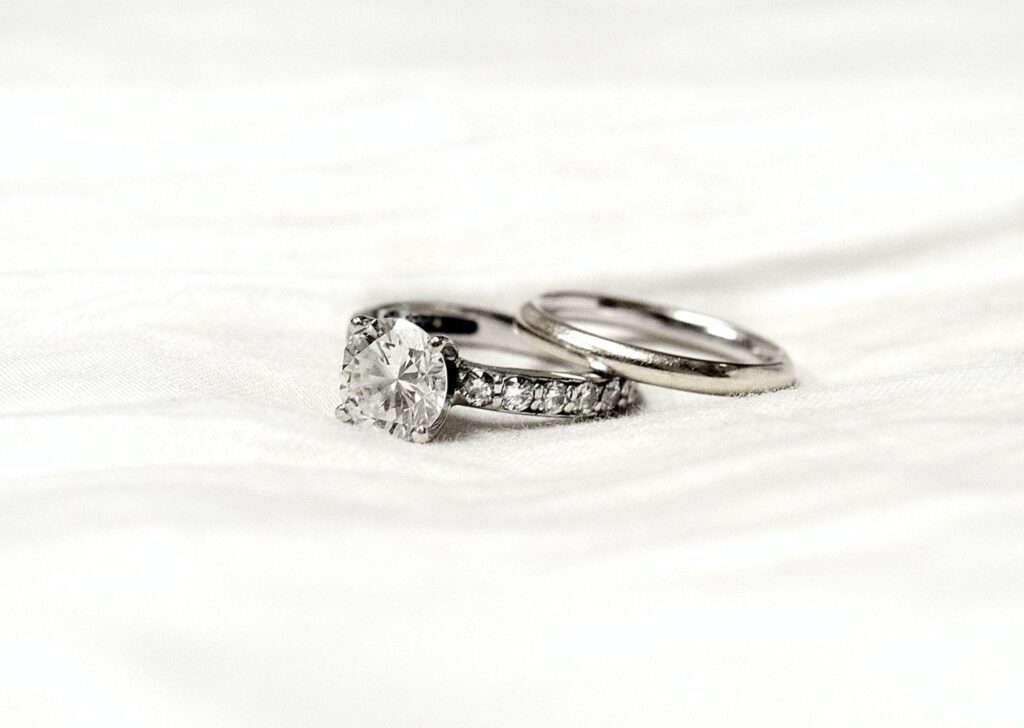
Unlike precious metals, which can be valued simply based on their purity, weight and market prices, diamonds require more careful evaluation. Quality isn’t just about the elemental content or the way a stone looks; it’s about details that can’t be seen by an untrained, naked eye.
When appraising a diamond, an expert look at four main categories: cut, color, carat (weight) and clarity. These categories are often referred to as the “4 C’s,” and each one has a unique impact on the stone’s final appraised value.
Cut
The cut of a diamond refers to the way the raw stone has been shaped and faceted into a gemstone. Not only do different styles and facet numbers affect the desirability and value of a stone in a retail setting, but the skill and cleanness of the work lends quality to the cut.
Color
Colorless and white diamonds tend to be most common, but they are actually available in a variety of colors (yellow, pink, blue, etc.). The color rating of a diamond is based on the hue and its intensity. An especially intense, richly colored diamond is likely to be valued higher in this category than a paler one.
Carat
The carat of a diamond refers to the stone’s overall size and weight. As with other gemstones and precious materials, a higher carat weight will generally fetch a higher price. Different carat diamonds are often used for different purposes, with larger ones serving as centerpieces and smaller ones serving as accent stones.
Clarity
Clarity refers to how visually clear the stone is and how many flaws are in the material. When a light shines through the diamond, any lines, discolorations or cloudy areas can be considered a flaw. The fewer flaws there are, the higher the clarity and overall quality of the diamond. Perfectly clear, flawless diamonds will have the highest value in this category.
The Diamond Rapaport: Decoding Diamond Value
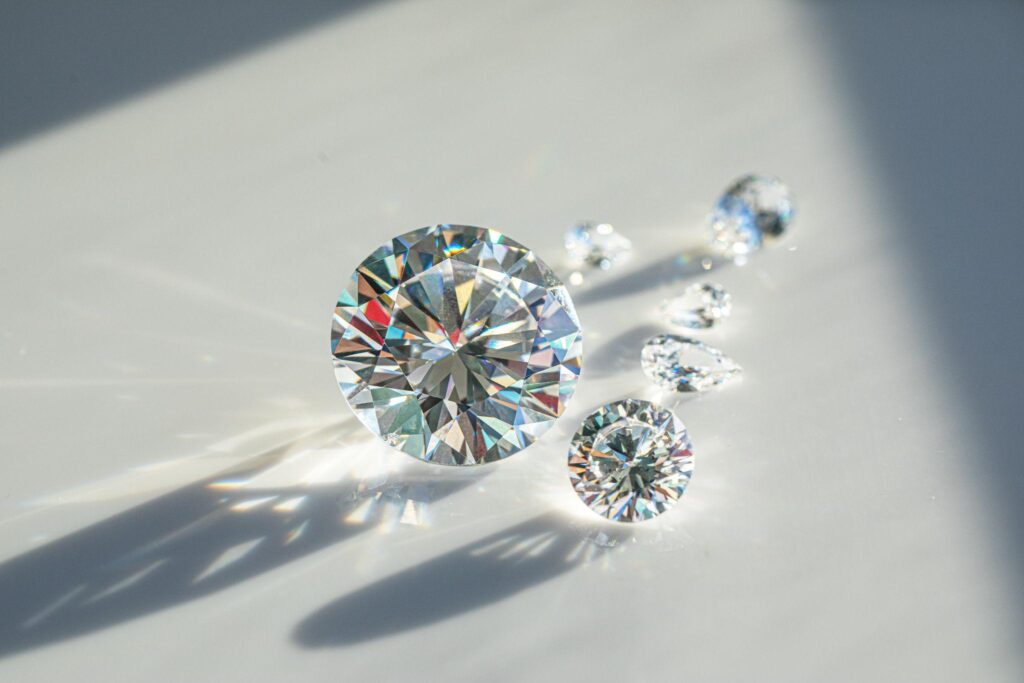
When discussing the value of diamonds, it’s crucial to mention the Diamond Rapaport. The Rapaport Price List is a benchmark used within the diamond industry to establish a baseline price for diamonds based on their carat, color, clarity, and cut.
Understanding the Real Value with Rapaport
At its core, the value of a diamond – like any other commodity or luxury good – is fundamentally determined by what someone is willing to pay for it. The Rapaport provides a guide price for diamonds, but it’s just that: a guide. If a specific diamond with particular characteristics is listed for a certain price on the Rapaport, then that essentially sets a ceiling on its market value. If you possess a diamond with identical characteristics, it’s unlikely your diamond will fetch a higher price because buyers can already acquire the same stone for the listed price.
This concept might sound straightforward, but it’s essential for consumers to understand. Often, the sentimentality attached to diamonds, especially those that mark significant life events like engagements, can distort our perception of their real market value. The Rapaport ensures there’s an objective measure against which diamonds can be valued.
A Practical Example
Imagine you have a diamond that, based on its 4Cs, is listed on the Rapaport for $5,000. Even if you believe your diamond has unique qualities that make it more valuable, a buyer or retailer can refer to the Rapaport and see that they can acquire a similar diamond for the stated price. In this context, it’s unlikely they’d offer you more than the Rapaport price, as they could easily get a comparable stone for that amount.
Making the Most of Your Money

While diamonds are a symbol of wealth and luxury, they are not an investment and aren’t always worth their retail store price. Customers often pay a premium for the convenience of shopping in a physical store, and the lack of industry transparency means prices can be manipulated.
Here’s how to make sure you’re making the most of your money, whether you’re planning to buy or sell a diamond.
Buying
So, if diamonds are not worth as much as you pay for them when you buy them from a retail outlet, what is the alternative? One option is to buy diamonds from online diamond wholesaler or auction sites. These outlets often offer lower prices than physical stores, as they have lower overhead costs. They also tend to be more transparent about the quality of their diamonds, as they are not as reliant on marketing tactics to sell their products.
Another option is to consider alternative gemstones. They are also less subject to market manipulation, as they are not as heavily marketed as diamonds. Budget-wise, alternative gemstones can often offer a similar sparkle and flash at a lower price point.
A third alternative is to buy diamonds from thrift stores, pawn shops and other such resellers. A used diamond has already depreciated in value from its original owner’s price, making it an affordable entry point for you. Many quality pre-owned diamonds still look new to the naked eye, making them a perfect budget-friendly option for things like jewelry and accessories.
Selling
If you previously purchased diamonds, inherited diamond jewelry or have your own pieces to sell, the key to getting a fair price is to start with the right buyer. Unless your item has significant aesthetic or collectible value to just the right customer, you aren’t likely to be offered much in a retail setting. Even if it’s a beautiful, unique stone, there’s no guarantee a retail buyer will opt to purchase it.
A reliable alternative is to sell your items to a company that specializes in diamond resale like Diamonds USA. Instead of being based on consumer interests and other subjective factors, the price you’ll get will be based on the current market value of the physical material itself. This ensures that you get what the stone and any other materials (gold, silver, platinum, etc.) are worth.
Sell Your Diamonds for Their Full Value at Diamonds USA
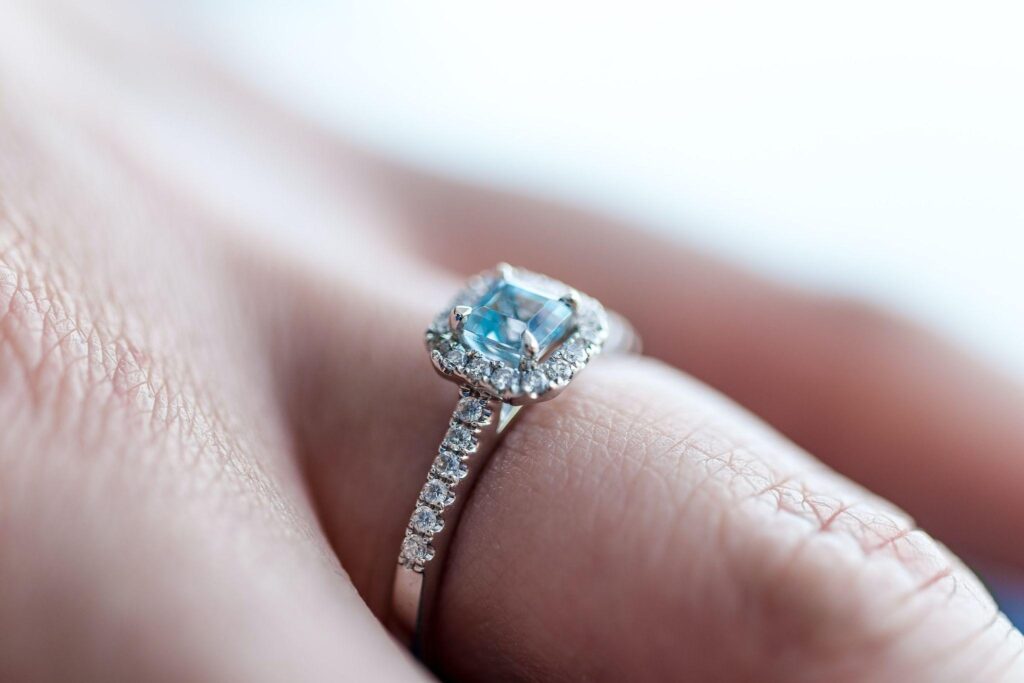
At Diamonds USA, we focus on providing sellers with fair market value offers for their diamonds, regardless of type or condition.
Here’s what you can expect when you sell with us:
- Start by filling out our short online form with basic information about your diamond items. Submit this form and we’ll send you a free diamond appraisal kit.
- When you receive your kit, place your diamonds in the free shipping materials provided. Ship them out as instructed and wait for us to receive your items. Your shipment will be tracked and insured throughout transit.
- Within 24 hours of receiving your shipment, we’ll send you our most competitive offer for your diamonds. If you’re satisfied with the amount, simply accept it to receive payment.
- If for any reason you’re unsatisfied with our offer, there is no obligation to sell. We will return your items safely to you at no additional cost.
Diamonds may not be the kind of long-term investment many people hope for, but that doesn’t mean you can’t benefit from the value that they have. If you’ve put money into the purchase of a diamond engagement ring or other item that’s no longer in use, the experienced appraisers at Diamonds USA can help you get the most for it.
Start by requesting a free appraisal kit today to find out how much your diamonds may be worth.
Post Revisions:
There are no revisions for this post.


Leave A Comment